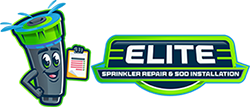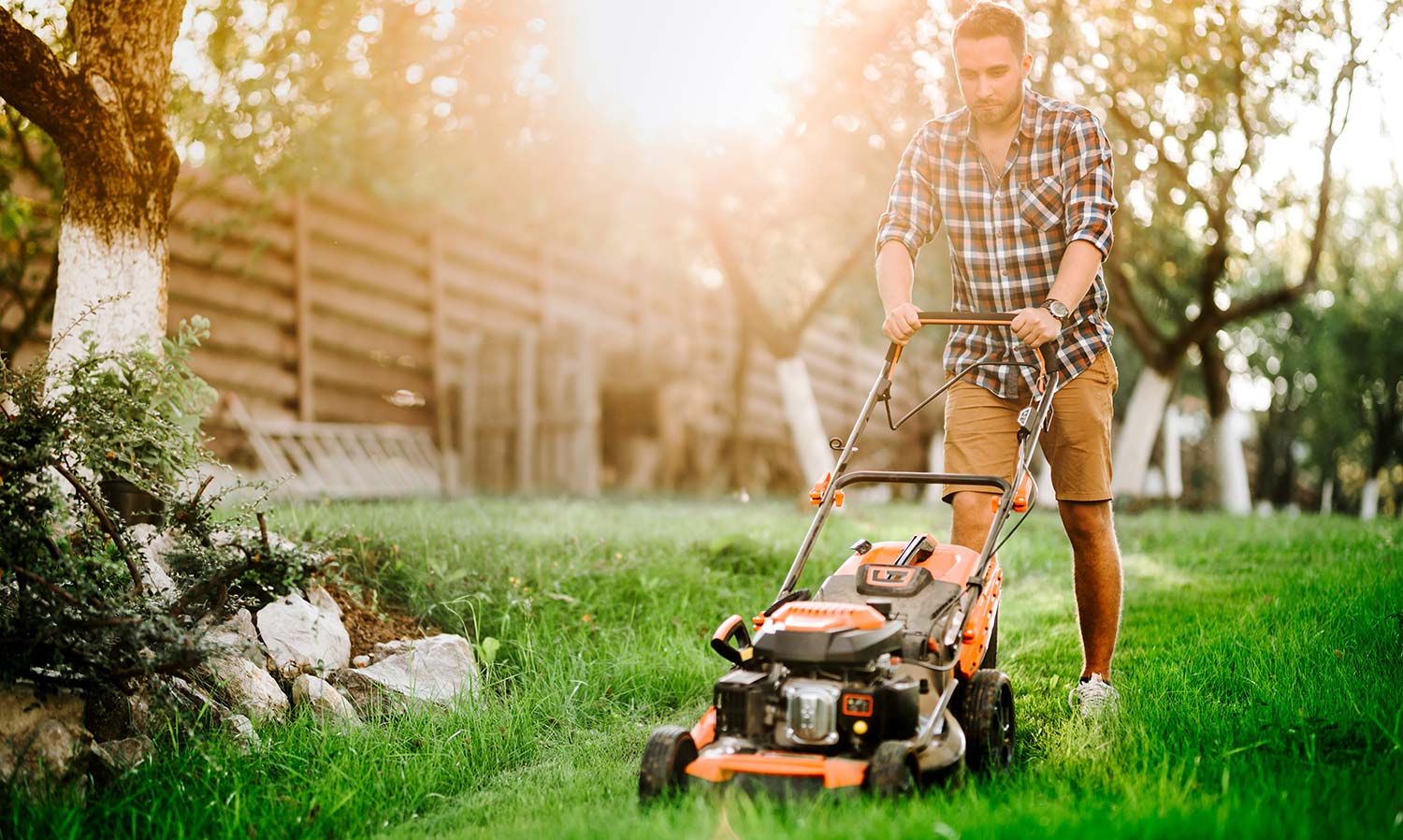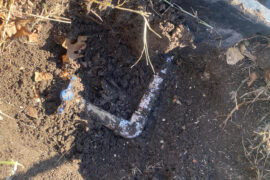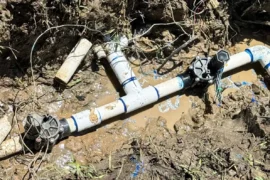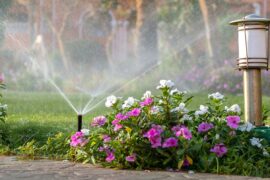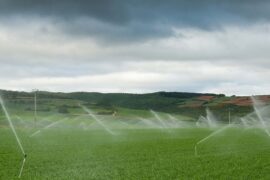Imagine you’re mowing your lawn on a sunny day, and suddenly, your lawn mower hits something hidden in the grass. It’s one of your lawn sprinklers! This might seem like a small problem, but it can lead to a lot of hassle. When lawn mowers and lawn sprinklers collide, it’s not just about fixing a broken sprinkler. It can affect how well your lawn grows and even hurt your wallet.
Understanding Lawn Mower and Sprinkler Interactions
The Anatomy of Lawn Sprinklers and Mowers
Understanding the design and function of lawn sprinklers and mowers is crucial. Lawn sprinklers, often installed at or slightly above ground level, are designed to retract when not in use. This retraction mechanism is pivotal in minimizing exposure to external elements, including the blades of a lawn mower.
Lawn mowers, on the other hand, come in various forms – push mowers, riding mowers, and automated models. Push mowers, favored for smaller lawns, operate close to the ground and can easily snag an improperly installed sprinkler. Riding mowers, the heavyweights of lawn care, bring added weight and force, increasing the risk of damaging protruding sprinkler heads. Automated or robotic mowers, a technological leap in lawn care, follow pre-set patterns but may still encounter sprinkler heads if they are not correctly mapped out or if the sprinkler heads protrude above their safety threshold.
Frequency and Impact of Collisions
The encounter between a lawn mower’s blades and a sprinkler is not a rare event in the realm of lawn care. Such collisions can range from a mere scrape to a catastrophic encounter, with the aftermath hinging on multiple variables. The type of mower in play is a critical factor. For instance, a manually operated push mower might cause less damage compared to a high-powered riding mower due to the difference in force and blade speed.
The condition and sharpness of the mower blades also play a pivotal role. Dull blades may tug or pull at a sprinkler head, causing dislodgment or damage to the connecting pipes. Conversely, sharp blades might cleanly sever a part of the sprinkler, leading to a different set of repair needs.
The material and installation quality of the sprinkler system cannot be overlooked. High-grade materials coupled with professional installation typically offer better resilience against such accidental encounters. However, even the sturdiest sprinkler heads might succumb to a direct hit from a heavy-duty mower. The aftermath of such an encounter is not merely a broken sprinkler; it often leads to water leakage, system malfunction, and can escalate to extensive damage to the lawn’s irrigation system, requiring costly repairs or replacements.
The Consequences of a Lawn Mower-Sprinkler Collision
Immediate Impact on the Sprinkler System
When a lawn mower accidentally runs over a sprinkler head, it can result in broken or misaligned heads, damaged valves, and sometimes, severed pipes. This damage not only disrupts the sprinkler’s functionality but can also lead to water waste and increased utility bills. Moreover, a damaged sprinkler system might not distribute water evenly, causing some parts of the lawn to receive too much water and others too little. This uneven distribution can stress the lawn, making it more susceptible to disease and poor health.
Long-Term Effects on Lawn Health
The health of a lawn is intricately tied to the effectiveness of its irrigation system. A sprinkler system compromised by lawn mower damage can lead to various long-term issues. Over-watered areas are prone to root rot, fungal growth, and moss infestation, which can weaken and kill grass. Conversely, under-watered areas can lead to the grass becoming dry, brittle, and susceptible to disease, ultimately leading to bare patches. This uneven watering pattern disrupts the lawn’s ecosystem, affecting its appearance, health, and resilience. Moreover, a malfunctioning sprinkler system might not activate at the set times or may fail to cover all areas, leading to inconsistent growth and health across the lawn.
Financial and Time Costs
Dealing with the aftermath of a lawn mower cutting off a lawn sprinkler is not only a hassle but can also be a financial burden. Depending on the severity of the damage, the repair process might require the expertise of a professional, which incurs additional costs. Simple fixes like replacing a broken sprinkler head might be relatively inexpensive, but more complex repairs involving underground pipes or electrical components can be costly. Additionally, the time spent diagnosing the problem, sourcing parts, and repairing the system can be considerable. This is especially true for homeowners who are not familiar with sprinkler systems and may need to spend time learning about the system before attempting repairs. Regular maintenance and preventive measures, such as protective barriers around sprinkler heads or mindful mowing practices, can help mitigate these risks and expenses. However, accidents can still occur, and being prepared for the potential costs and time investments is important for any homeowner with an integrated lawn care system.
Steps to Take Post-Collision
Assessing the Damage
After a mower and sprinkler system collision, the first step is to carefully evaluate the extent of the damage. This assessment is not just about looking for visible damage such as cracked or broken sprinkler heads. It involves a detailed inspection to identify any less obvious issues that could lead to long-term problems. Check for misaligned heads, which can result in inefficient irrigation patterns and dry spots in the lawn. Also, inspect for leaks in the system, as even small leaks can escalate water bills and cause overwatering in certain lawn areas. Additionally, evaluate the lawn mower for any damages, as collisions can dull blades or damage mower decks, impacting the mower’s effectiveness and longevity.
Repair and Replacement Options
In the event of damage, swift action is needed to repair or replace the affected components of the sprinkler system. Broken or damaged heads must be replaced to ensure the system functions correctly and efficiently. For homeowners who are not DIY-inclined, professional services such as TruGreen offer comprehensive care, including annual maintenance plans. These plans often cover routine check-ups and replacements, with some plans offering up to three free replacement sprinkler heads per quarterly visit. This can be a cost-effective and convenient solution for maintaining a healthy irrigation system. Additionally, repairing any leaks or damages in the system’s pipes is crucial to prevent water waste and ensure optimal performance.
Insurance and Liability Considerations
Understanding the nuances of insurance and liability is crucial, especially in cases where lawn care is managed by external service providers. Homeowners should thoroughly review their home insurance policies to determine if such accidents are covered. In some cases, damage to landscaping elements, including sprinkler systems, might be included in the policy. However, the specifics can vary greatly depending on the insurance provider and the chosen plan. It’s also important to discuss liability issues with the lawn care service provider. Professional lawn care companies typically have their own insurance, which may cover damages caused by their equipment or personnel. Ensuring clear communication and understanding of who bears the financial responsibility in such scenarios is key to avoiding unexpected expenses and legal complications.
Conclusion
Collisions between lawn mowers and sprinklers, though often overlooked, can lead to significant inconveniences and costs. By understanding the dynamics of such incidents, adopting preventive measures, and being prepared for damage management, homeowners can ensure the health and aesthetics of their lawns without unforeseen setbacks.
